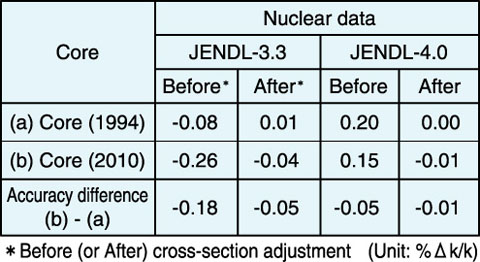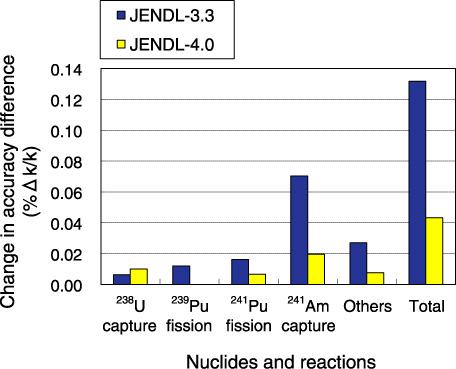Table 1-2 Calculation accuracy before and after cross-section adjustment


Fig.1-19 Effect of cross-section adjustment on accuracy difference
Fast reactors have the potential to reduce high-level radioactive waste by recycling minor actinides (MAs) and Pu. Mixing MAs with the fuel would deteriorate the prediction accuracy of core parameters because nuclear data of MAs are less reliable than those of major nuclides owing to limited validation data. Core parameter data under the presence of a significant amount of MA do not exist for 241Am, a major target MA to be recycled.
“MONJU” restarted its system start-up test in 2010, and the 241Am content in the fuel was three times larger than that in the previous test carried out in 1994. Comparison of the calculation accuracy of core parameters between the cores may help in validating 241Am nuclear data.
The main difference between the cores lies in their fuel composition, but the difference is also seen for nuclides other than 241Am. In this study, we try to extract an influence of the 241Am composition change on the calculation accuracy by employing the cross-section adjustment technique. The technique adjusts cross sections (or nuclear data) within their uncertainties so that calculated values of core parameters are close to experimental values. We can infer the reliability of the nuclear data from the extent of the adjustment.
Uncertainties related to experiments and calculations should be evaluated carefully for the correct adjustment of the nuclear data. Too small or too large uncertainties result in too large or too small adjustments. We have devoted considerable effort to minimizing the uncertainties and avoiding an unexpected bias.
Table 1-2 compares the calculation accuracy before and after the adjustment for JENDL-4.0 (published in 2010) and JENDL-3.3 (2002). In the case of JENDL-3.3, a difference of -0.2%Δk/k is observed between the cores before the adjustment. The difference is reduced to one-fourth by the adjustment. For JENDL-4.0, a difference is as small as that achieved after the adjustment in the case of JENDL-3.3.
Fig.1-19 presents the change for major nuclides and reactions. The adjustment of the 241Am capture cross section is the dominant reason for the reduction of the core dependence observed in the case of JENDL-3.3. This implies that there is room for improving the accuracy of 241Am data of the original JENDL-3.3. In contrast, the change in the case of JENDL-4.0 is small, indicating the high reliability of the original.
The above results show that the “MONJU” reactor physics data are valuable for the validation of 241Am nuclear data and that updating JENDL-3.3 to JENDL-4.0 is reasonable.